How to Write an Epic, Justin Steele [best chinese ebook reader TXT] 📗
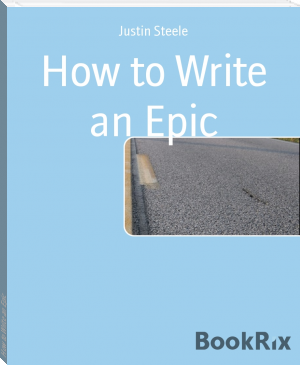
- Author: Justin Steele
Book online «How to Write an Epic, Justin Steele [best chinese ebook reader TXT] 📗». Author Justin Steele

Image source: http://commons.wikimedia.org/wiki/File:Epic_Systems_112109_Sign.jpg
The Epic Assignment
By Mr. Steele
Created for EdTech 541
Fall 2014
Table of Contents
What is an epic?
Homer….That yellow guy on TV, right?
How do you tell an epic?
Invocation of a muse
In medias res
Trips to the underworld
Grand Battle Scenes
Army Might
Invocation of the muse
Oh muse- guide me this night through my tale. Deliver through my mouth the story you wish to tell and let it be the development and creation of an epic. That my students can see this guide and create their own epic tale of their lives in middle school.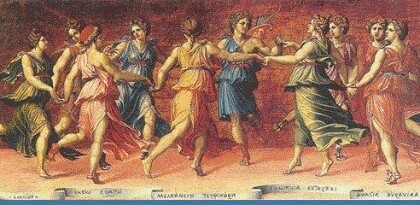
Image source: http://www.wga.hu/art/p/peruzzi/muses.jpg
What is an epic?
Epics are actually some of the oldest forms of storytelling. If you look at the dictionary definition of an epic, you will learn that an epic is a long poem or story about a hero who is experiencing exciting events or adventures. There are two epics which are arguably the most well known; each told by the same man: Homer. Homer was a Greek storyteller and poet who told both The Iliad and The Odyssey. If you want to go further back in time, The Epic of Gilgamesh isn’t to be missed, but for our sake, we will just focus on the “Homeric” poems.
The Iliad covers the Trojan War but in a detail that is based less on fact and more on creative story telling.Trojan maidens are taken by the Greeks and the Iliad covers all of the lengths the Trojans were willing to take to get their people back.
The Odyssey follows the hero Odysseus as he attempts to get home after the Fall of Troy during the trojan war. Odysseus’ journey is filled with vengeful gods, cyclops battles and more.
Homer….That yellow guy on TV, right?
 Image source: http://www.argazkiak.org/photo/homer-simpson/
Image source: http://www.argazkiak.org/photo/homer-simpson/
This guy? No, no, no. Not this one.
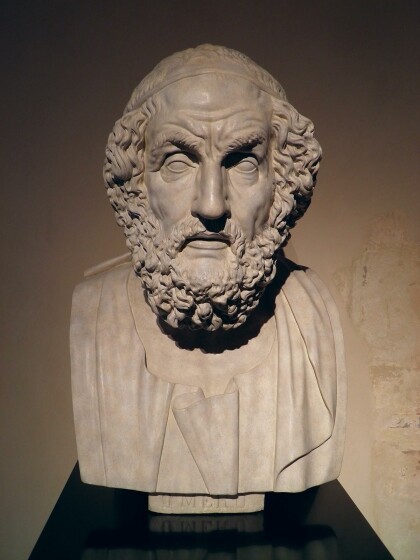 Image source: http://commons.wikimedia.org/wiki/File:Bust_of_the_poet_Homer,_replica_from_the_Archaelogical_museum_of_Naples,_Neues_Museum,_Berlin_(8169127839).jpg
Image source: http://commons.wikimedia.org/wiki/File:Bust_of_the_poet_Homer,_replica_from_the_Archaelogical_museum_of_Naples,_Neues_Museum,_Berlin_(8169127839).jpg
Yep, this is the guy. Greek, made of stone and really old. This is the Homer we’re talking about.
How do you tell an epic?
Qwiklit provides some wonderful details on what should included for a tale to be considered epic poem or story:
The invocation of a muse. These poets plea to the gods at the very beginning to grant them the power to tell these stories with a certain forcefulness, though some admittedly pretend to do so to claim they are divinely empowered.
Many of these begin in medias res, in the middle of the story, and may digress into the past later on in the poem.
There are many journeys into the underworld.
There are grand battle-scenes punctuated by extended similes, ambitious analogies that stretch the imagination but strive for literary glory.
Many will feature the might of armies in long digressions featuring weaponry and war games.
Seems easy, right? Well…let’s break it down a little more.
Invocation of a muse
This is usually associated with calling down to the gods of creativity to grant the story teller the ability to tell the tale at hand. That would as if a movie director listed all of the people responsible for making a movie happen...Oh, what? You mean they already do that? It’s called a credits sequence and looks a little bit like this?

Image source: http://www.kansastravel.org/07busterkeatoncelebration1.JPG
Well...Alright then. Moving on.
In medias res
This means that the story begins in the middle of the entire story but leaves the option open to return to the beginning at a later time. Personally, I look to the Harry Potter series as a good example of this. Admittedly, following the tenets outlined by Qwiklit, Harry Potter is not an epic. However, it works well in this example. Some fan theorists (meaning this is totally unconfirmed) have pointed to the fact that were Harry Potter to happen in real life (which it totally does, because I mean c’mon. There has to be good in this world), the story which the books are telling open at the end of the real life events. This would in essence make the opening of the books the middle of the entire story and allows for the books to travel backward to tell the tale of the beginning. The theorists also believe this is the reason the snitch says, “I open at the close” as a pointed indication that the story has already ended.
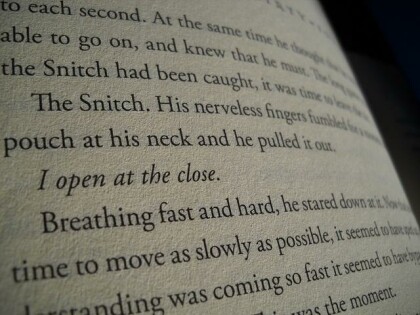 (image source: https://c1.staticflickr.com/5/4127/5052054365_45f26e2d71_z.jpg)
(image source: https://c1.staticflickr.com/5/4127/5052054365_45f26e2d71_z.jpg)
Confused yet? Good. Picking up speed now.
Trips to the underworld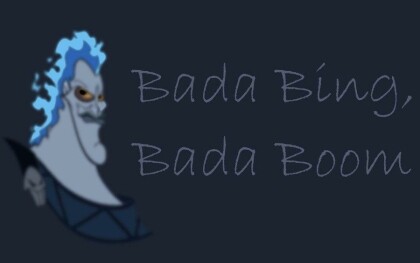
In order for a story to be considered an epic, there have to be trips to the underworld. Usually, this is done to reclaim something that was taken or to confront death either metaphorically or literally. This was especially common in Greek epics due to Hades lord of the Underworld being such a tangible character who was not only a character, but often moved the story forward.
Image source: http://froggiegirl1994.deviantart.com/art/Hades-Background-330429707
Grand Battle Scenes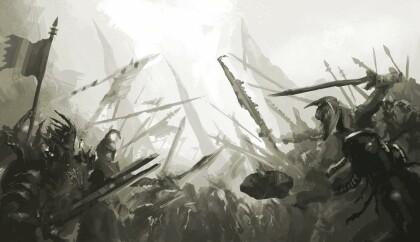
Image source: http://th01.deviantart.net/fs70/PRE/i/2013/177/9/8/battle_scene_by_scoffsart-d6aq3gf.jpg
No story is worth telling if there aren’t fight scenes, am I right? There is a need for action and epics can do action. Better than Mel Gibson, that’s for sure. Battle scenes in epics serve much the same purpose as battle scenes in modern movies. They provide





Comments (0)